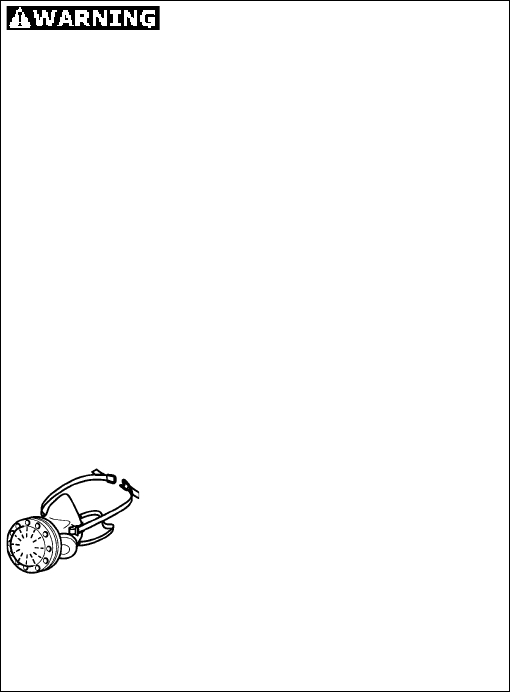
4
medication. A moment of inattention while
operating power tools may result in serious
personal injury.
10 Dress properly. Do not wear loose
clothing or jewelery. Contain long hair.
Keep your hair, clothing, and gloves
away from moving parts. Loose clothes,
jewelery, or long hair can be caught in mov-
ing parts.
11 Avoid accidental starting. Be sure
switch is off before plugging in. Carrying
tools with your fi nger on the switch or plug-
ging in tools that have the switch on invites
accidents.
12 Remove adjusting keys or switches
before turning the power tool on. A
wrench or key that is left attached to a rotat-
ing part of the tool may result in personal
injury.
13 Do not overreach. Stand on both feet
and keep proper footing and balance at
all times. Proper footing and balance permit
better control of the tool in unexpected situ-
ations.
14 Use safety equipment. Always wear
eye protection. Dust mask, non-skid safety
shoes, hard hat, or hearing protection must
be used when appropriate.
Tool use and care
15 Use clamps or other suitable means
to secure and support the workpiece
to a stable platform. Holding the work by
hand or against your body is unstable and
may lead to loss of control.
16 Do not force the tool. Use the correct
tool for your application. The correct tool
will do the job better and safer at the rate for
which it is designed.
17 Do not use the tool if switch does not
turn it on or off. Any tool that cannot be
controlled with the switch is dangerous and
must be repaired.
18 Disconnect the plug from the power
source before making any adjustments,
changing accessories, or storing the
tool. Such preventative safety measures
reduce the risk of starting the tool acciden-
tally.
19 Store idle tools out of reach of chil-
dren and other untrained persons. Tools
are dangerous in the hands of untrained us-
ers.
Various dust created by
power sanding, sawing, grinding, drilling
and other construction activities contains
chemicals known (to the State of Califor-
nia) to cause cancer, birth defects or other
reproductive harm. Some examples of
these chemicals are:
• Lead from lead-based paints,
• Crystalline silica from bricks and cement
and other masonry products,
• Arsenic and chromium from chemically-
treated lumber.
The risk from these exposures varies, de-
pending on how often you do this type of
work.
To reduce your exposure to
these chemicals work in a
well ventilated area and use
approved safety equipment,
such as dust masks that are
specially designed to fi lter out
microscopic particles.
20 Maintain tools with care. Keep bits,
blades and cutting tools sharp and
clean. Properly maintained tools with sharp
cutting edges are less likely to bind and are
easier to control.
21 Check for misalignment or binding
of moving parts, breakage of parts, and
any other condition that may affect the
tool's operation. If damaged, have the
tool serviced before using it. Many ac-
cidents are caused by poorly maintained
tools.
22 Use only accessories that are
recommen ded by the manufacturer for
your model. Accessories that may be suit-
able for one tool may become hazardous
when used on another tool.
Service
23 Tool service must be performed only
by qualifi ed repair personnel. Service or
maintenance performed by unqualifi ed per-
sonnel can result in a risk of injury.
24 When servicing a tool, use only iden-
tical replacement parts. Follow instruc-
tions in the Maintenance section of this


















